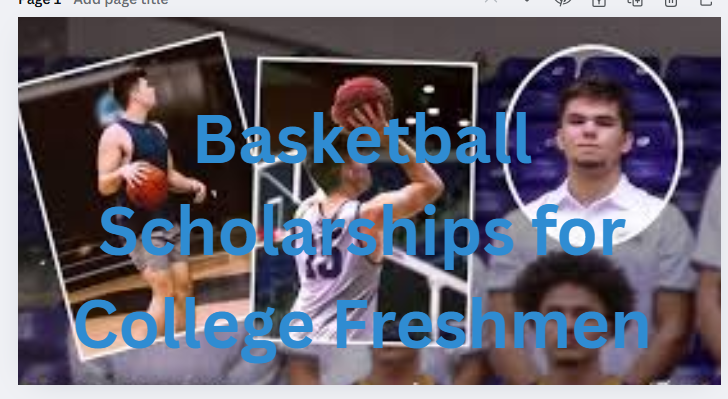For many high school athletes, playing college basketball is a dream—and for some, it’s also a way to afford a college education. Basketball scholarships for college freshmen provide an incredible opportunity to reduce or even eliminate tuition costs while continuing to compete at a high level. Whether you’re aiming for NCAA Division I or a smaller college program, understanding how basketball scholarships work can give you a competitive edge.
What Is a Basketball Scholarship?
A basketball scholarship is financial aid awarded to student-athletes based on their athletic ability and academic standing. These scholarships can be full-ride, covering tuition, room, board, and other expenses, or they can be partial, paying for only a portion of college costs. They are typically offered by colleges and universities but can also come from private organizations.
Types of Basketball Scholarships
College basketball scholarships vary depending on the division level:
- NCAA Division I: These schools offer full scholarships to top-tier athletes. Each men’s team can have up to 13 scholarship players, and women’s teams can offer up to 15.
- NCAA Division II: Scholarships are usually partial, meaning coaches split funds among more players. This allows more athletes to receive some level of financial support.
- NAIA and NJCAA: These programs also offer basketball scholarships, often with more flexibility. Junior colleges (JUCOs) can be a stepping stone to four-year schools.
How to Qualify for a Scholarship
Getting a basketball scholarship is competitive. Coaches are looking for more than just raw talent—they want well-rounded athletes. Here’s how to improve your chances:
- Strong academic record: Maintain good grades and a solid GPA. Academic performance matters, especially when schools have to meet eligibility requirements.
- Basketball skills: Excel in your high school or club team. Consistency, teamwork, and coachability are key traits.
- Athletic resume and highlight video: Create a professional-looking portfolio showcasing your stats, achievements, and game footage.
- Get exposure: Participate in AAU circuits, basketball camps, and showcases where college scouts are present.
- Start early: Coaches often begin recruiting during sophomore or junior year. Start reaching out to programs of interest as early as possible.
Application Process
Applying for a basketball scholarship involves several steps:
- Register with the NCAA Eligibility Center (for NCAA programs). This ensures you meet academic and amateurism standards.
- Contact coaches: Send emails, introduce yourself, and include a highlight video and academic info. Follow up if needed.
- Complete FAFSA: This helps schools determine your financial need and eligibility for other types of aid.
- Visit campuses: If invited, take official or unofficial visits to schools to meet the team and see if it’s a good fit.
Tips for Standing Out
- Be proactive: Don’t wait for coaches to find you. Reach out early and often.
- Stay active on social media: Share training clips, game highlights, and academic milestones. Coaches often check athletes’ online presence.
- Be realistic: Not everyone will land a Division I offer. Explore all levels and keep options open.
- Communicate well: Respond to coaches promptly and professionally. Demonstrating maturity and interest can set you apart.
Common Mistakes to Avoid
Many talented athletes miss out on scholarships due to avoidable errors. Here are a few to watch out for:
- Waiting too long: Starting late puts you behind athletes already on coaches’ radar.
- Poor academics: No matter how good your game is, poor grades can disqualify you.
- Ignoring smaller programs: Division II, NAIA, or JUCO programs can still offer great scholarships and exposure.
- Overlooking fit: A scholarship is great, but make sure the college also suits your academic and personal needs.
Scholarships from Private Organizations
In addition to college-awarded scholarships, some nonprofit and private organizations support student-athletes:
- Foot Locker Scholar Athletes Program
- The Ron Brown Scholar Program
- The Gates Scholarship (for minority students with strong academic and leadership potential)
These aren’t specific to basketball but can help cover additional costs not included in athletic scholarships.
Final Thoughts
Basketball scholarships for college freshmen open doors—not just to education, but to personal growth and athletic development. While earning one isn’t easy, preparation, performance, and persistence can make a big difference. Start early, stay committed, and don’t overlook any opportunity that can bring you closer to both your academic and athletic goals.
Whether you play for a big-name university or a smaller school, your talent on the court can help you earn a degree and a bright future.
